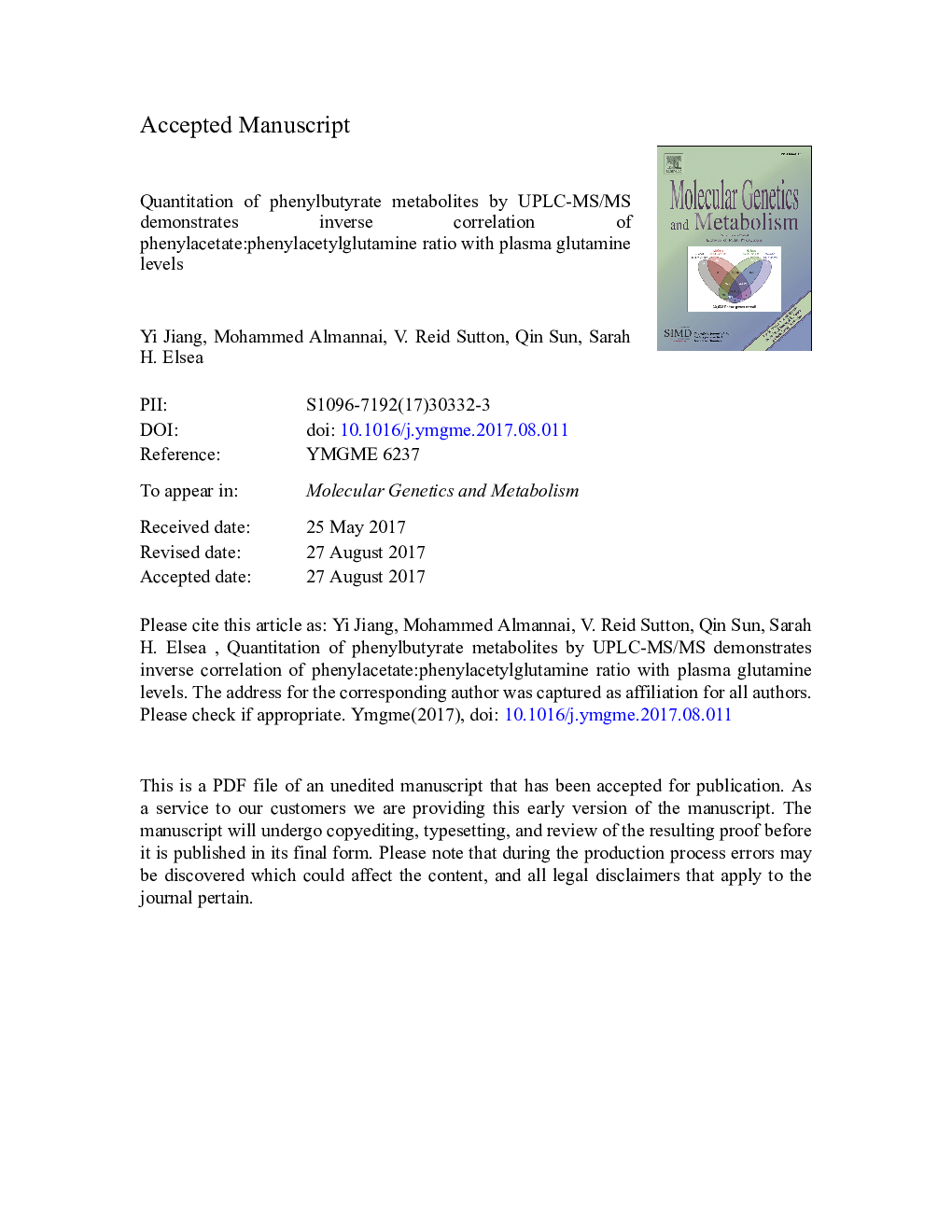| Article ID | Journal | Published Year | Pages | File Type |
|---|---|---|---|---|
| 8343651 | Molecular Genetics and Metabolism | 2017 | 25 Pages |
Abstract
Urea cycle disorders (UCDs) are genetic conditions characterized by nitrogen accumulation in the form of ammonia and caused by defects in the enzymes required to convert ammonia to urea for excretion. UCDs include a spectrum of enzyme deficiencies, namely n-acetylglutamate synthase deficiency (NAGS), carbamoyl phosphate synthetase I deficiency (CPS1), ornithine transcarbamylase deficiency (OTC), argininosuccinate lyase deficiency (ASL), citrullinemia type I (ASS1), and argininemia (ARG). Currently, sodium phenylbutyrate and glycerol phenylbutyrate are primary medications used to treat patients with UCDs, and long-term monitoring of these compounds is critical for preventing drug toxic levels. Therefore, a fast and simple ultra-performance liquid chromatography (UPLC-MS/MS) method was developed and validated for quantification of phenylbutyrate (PB), phenylacetate (PA), and phenylacetylglutamine (PAG) in plasma and urine. The separation of all three analytes was achieved in 2 min, and the limits of detection were < 0.04 μg/ml. Intra-precision and inter-precision were < 8.5% and 4% at two quality control concentrations, respectively. Average recoveries for all compounds ranged from 100% to 106%. With the developed assay, a strong correlation between PA and the PA/PAG ratio and an inverse correlation between PA/PAG ratio and plasma glutamine were observed in 35 patients with confirmed UCDs. Moreover, all individuals with a ratio â¥Â 0.6 had plasma glutamine levels < 1000 μmol/l. Our data suggest that a PA/PAG ratio in the range of 0.6-1.5 will result in a plasma glutamine level < 1000 μmol/l without reaching toxic levels of PA.
Related Topics
Life Sciences
Biochemistry, Genetics and Molecular Biology
Biochemistry
Authors
Yi Jiang, Mohammed Almannai, V. Reid Sutton, Qin Sun, Sarah H. Elsea,
